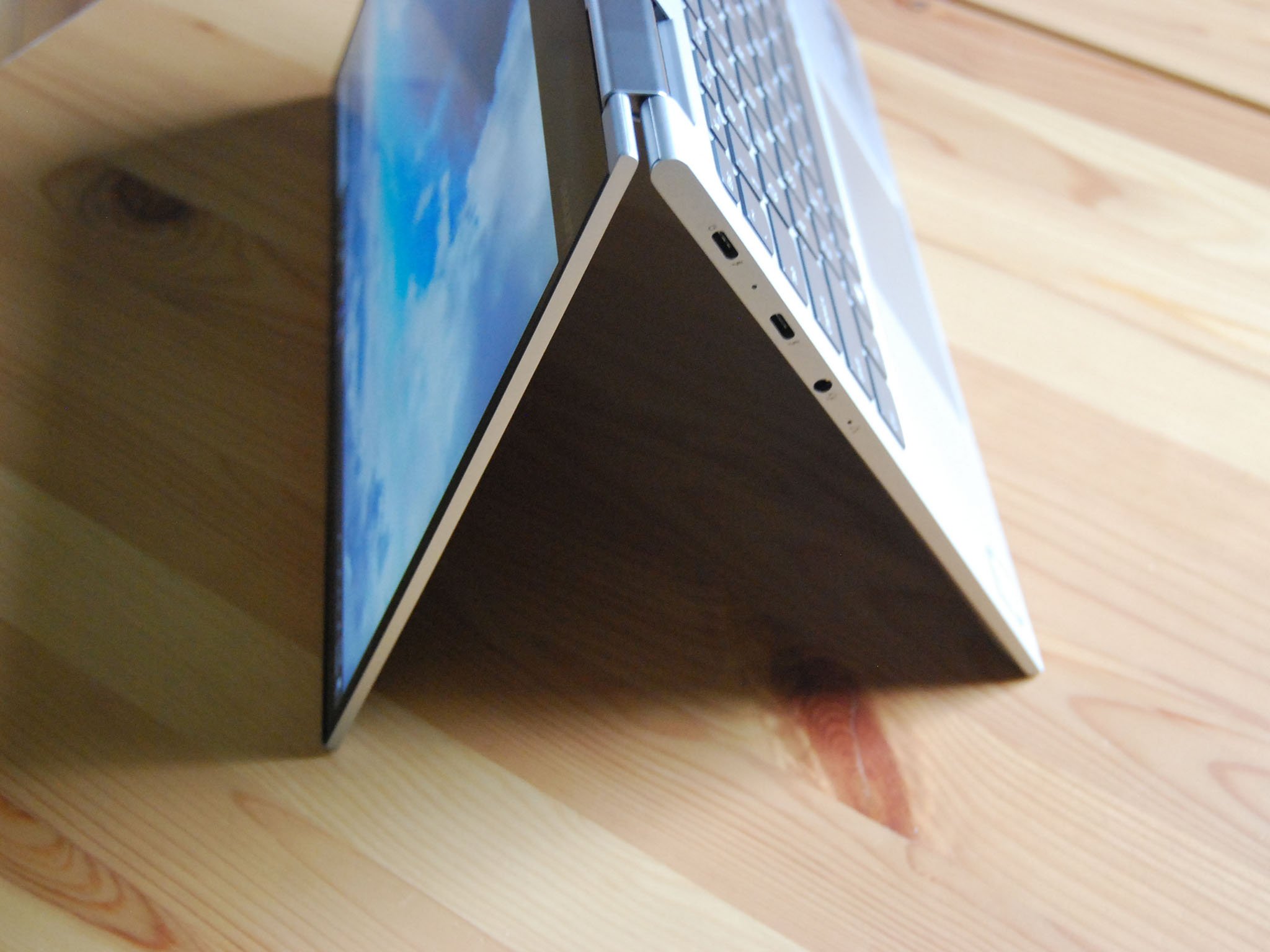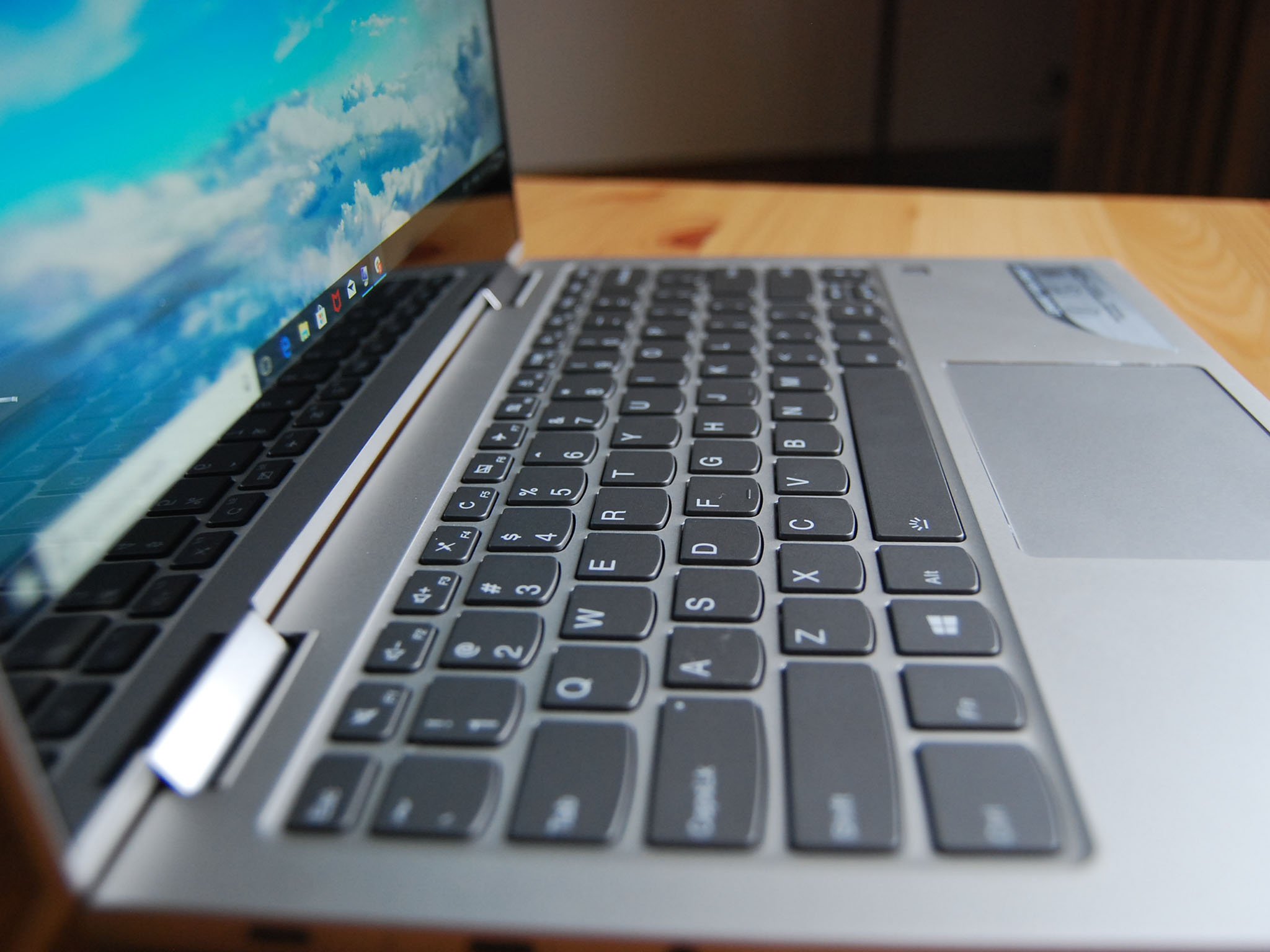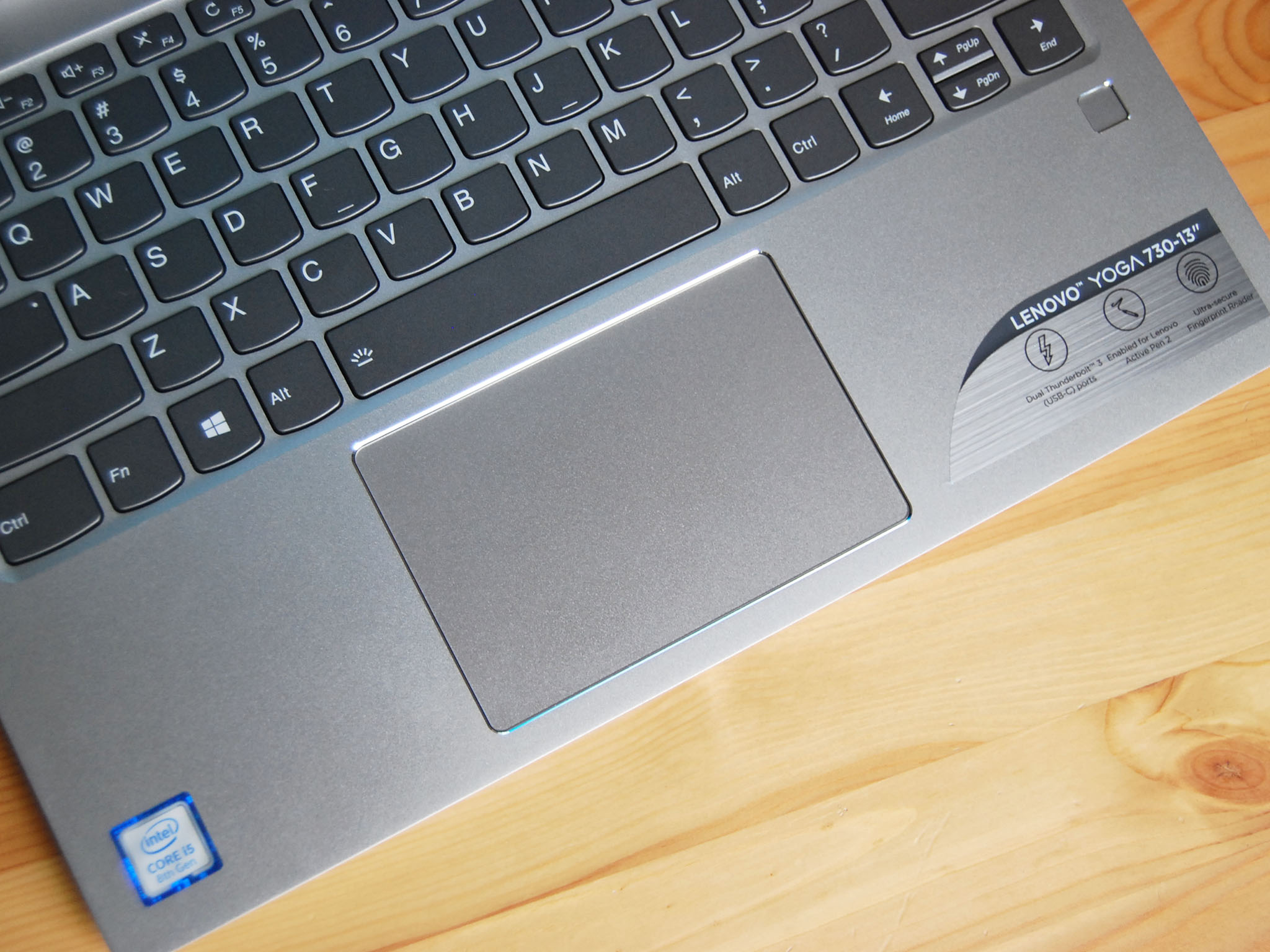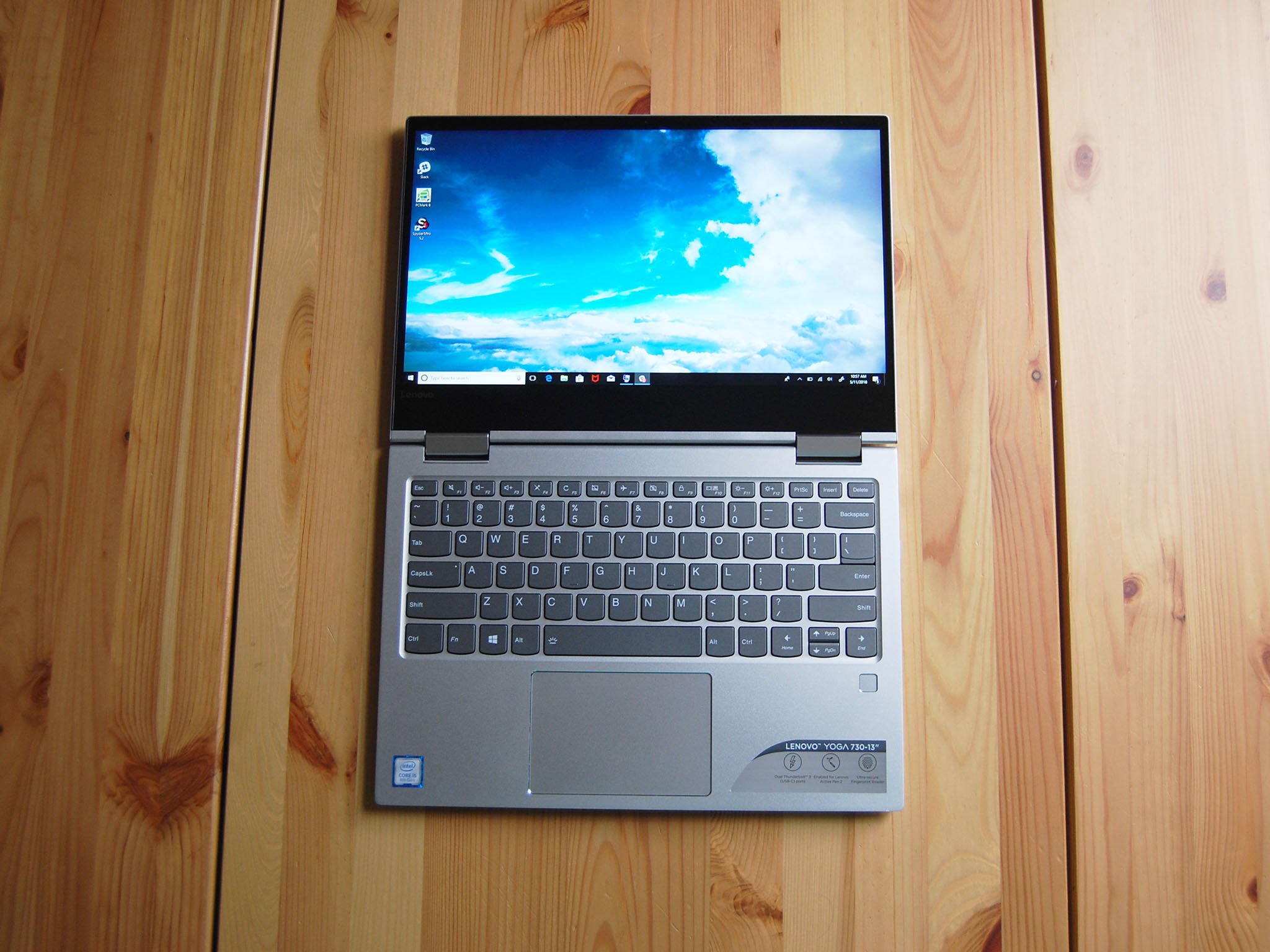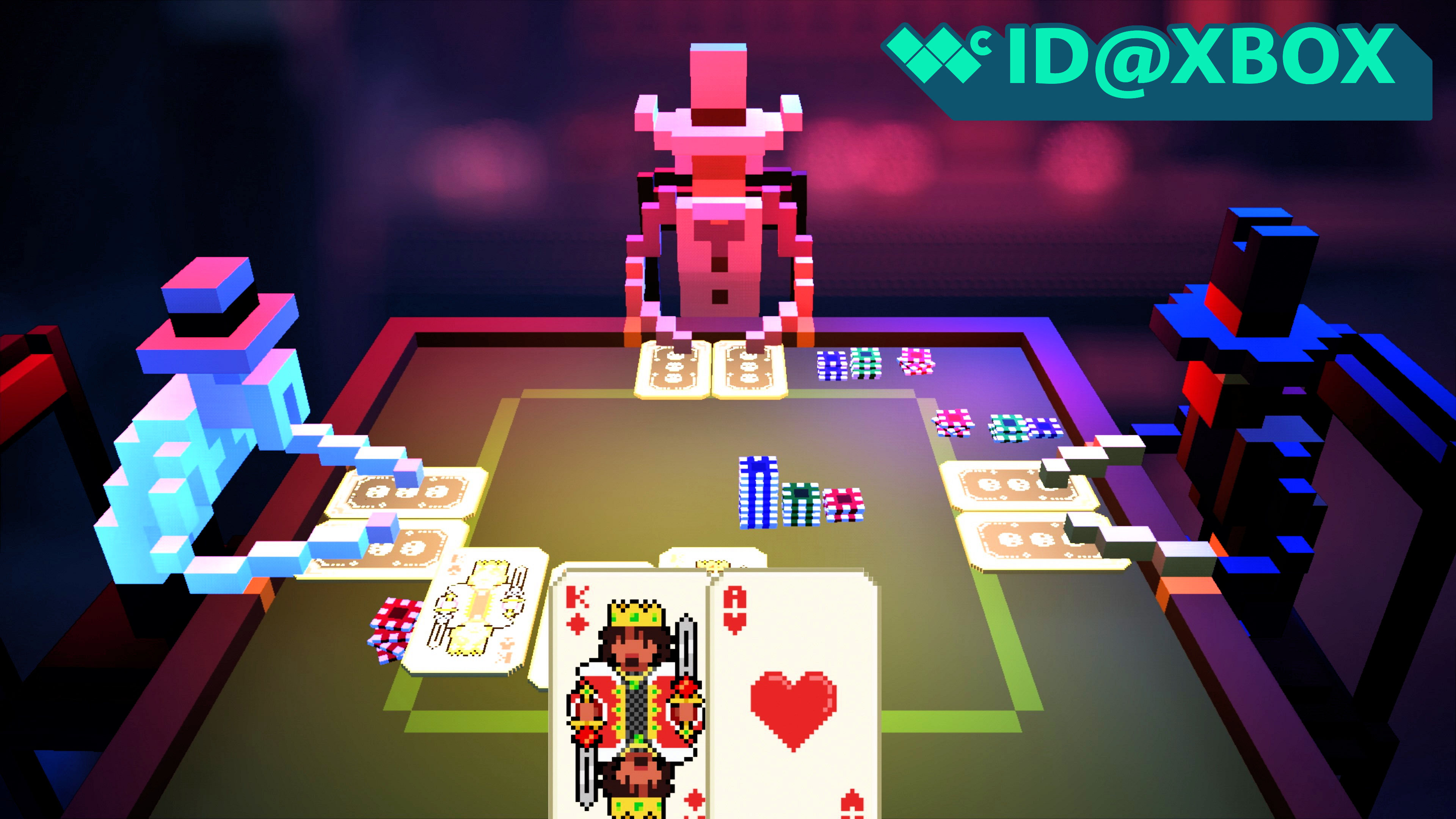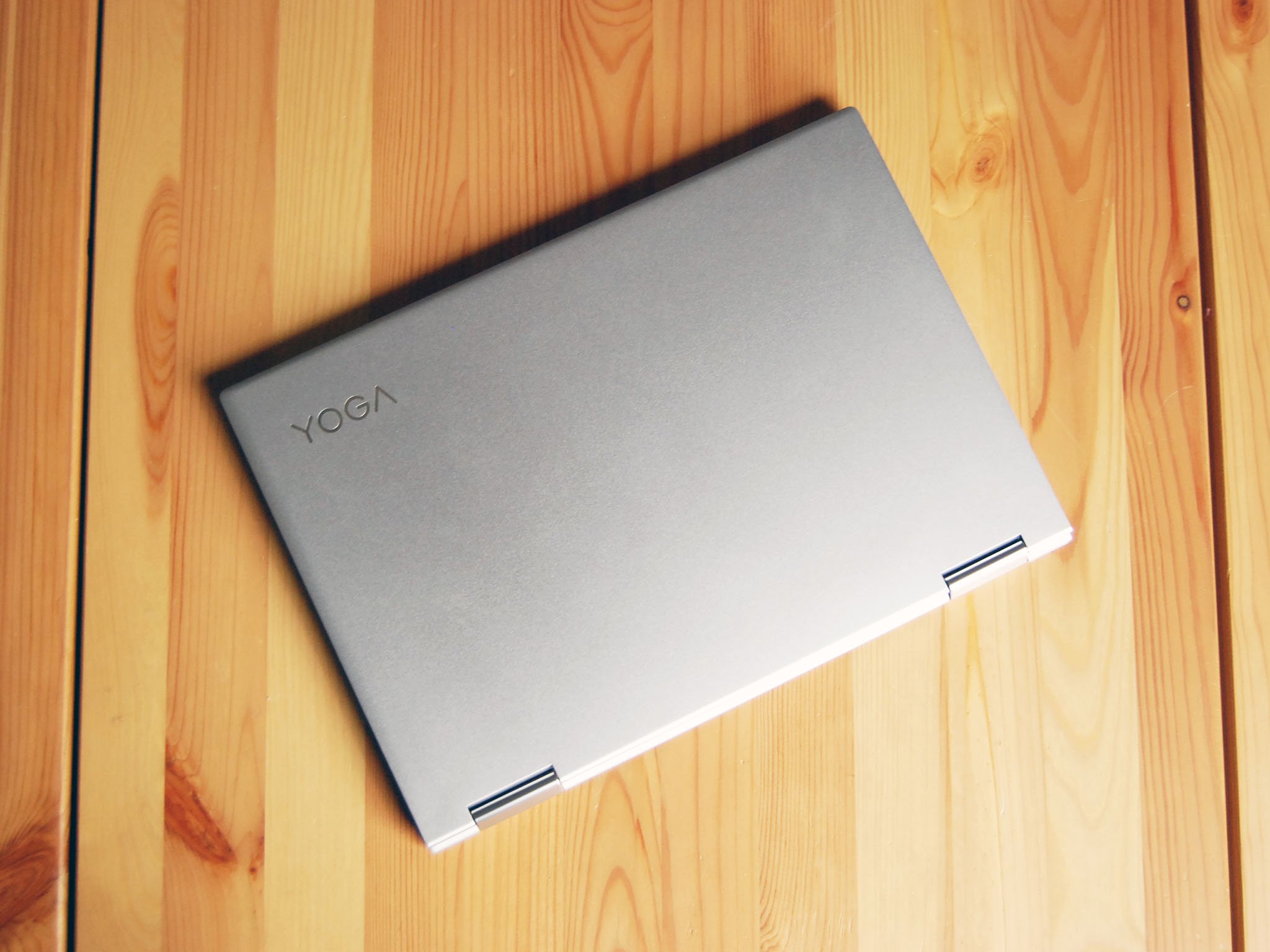
The usual refresh cycle for laptops is in full 2018 swing, and Lenovo's convertible 13-inch Yoga 730 is the latest that I've been testing out for about the last two weeks. I reviewed its predecessor, the Yoga 720, almost exactly a year ago, pointing out weak battery life and a dim display as a couple of the cons.
Now sporting 8th Gen Intel processors (CPU), different ports, a lighter chassis, and Lenovo's Rapid Charge technology, let's see if the 13-inch Yoga 730 is a worthwhile upgrade that's worth your money.
About this review
Lenovo supplied Windows Central with a review unit of the 13-inch Lenovo Yoga 730. This specific configuration has inside an 8th Gen Intel Core i5 processor (CPU), 8GB of RAM, and a 256GB solid-state drive (SSD). Expect to pay about $850 for this model, though prices do start at about $800.
Lenovo Yoga 730 hardware and specs
| Category | XX |
|---|---|
| Processor | 8th Gen Intel Core i5-8250U |
| Storage | 256GB PCIe SSD |
| RAM | 8GB DDR4-2400MHz |
| Display | 13.3-inch FHD (1,920 x 1,080) Touch, glossy, IPS |
| Graphics | Intel UHD Graphics 620 |
| Ports | Two Thunderbolt 3 USB-A 3.0 3.5mm audio jack |
| Speakers | Dual JBL stereo |
| Wireless | Intel Dual Band Wireless-AC 8265 802.11ac (2 x 2) Bluetooth 4.1 |
| Camera | Front-facing 720p |
| Keyboard | Backlit |
| Touchpad | Precision |
| Biometrics | Fingerprint reader |
| Battery | 48Wh |
| Weight | 2.47 pounds (1.12 kg) |
| Dimensions | 11.53 in x 8.01 in x 0.62 in (293 mm x 203.4 mm x 15.75 mm) |
Lenovo Yoga 730 design
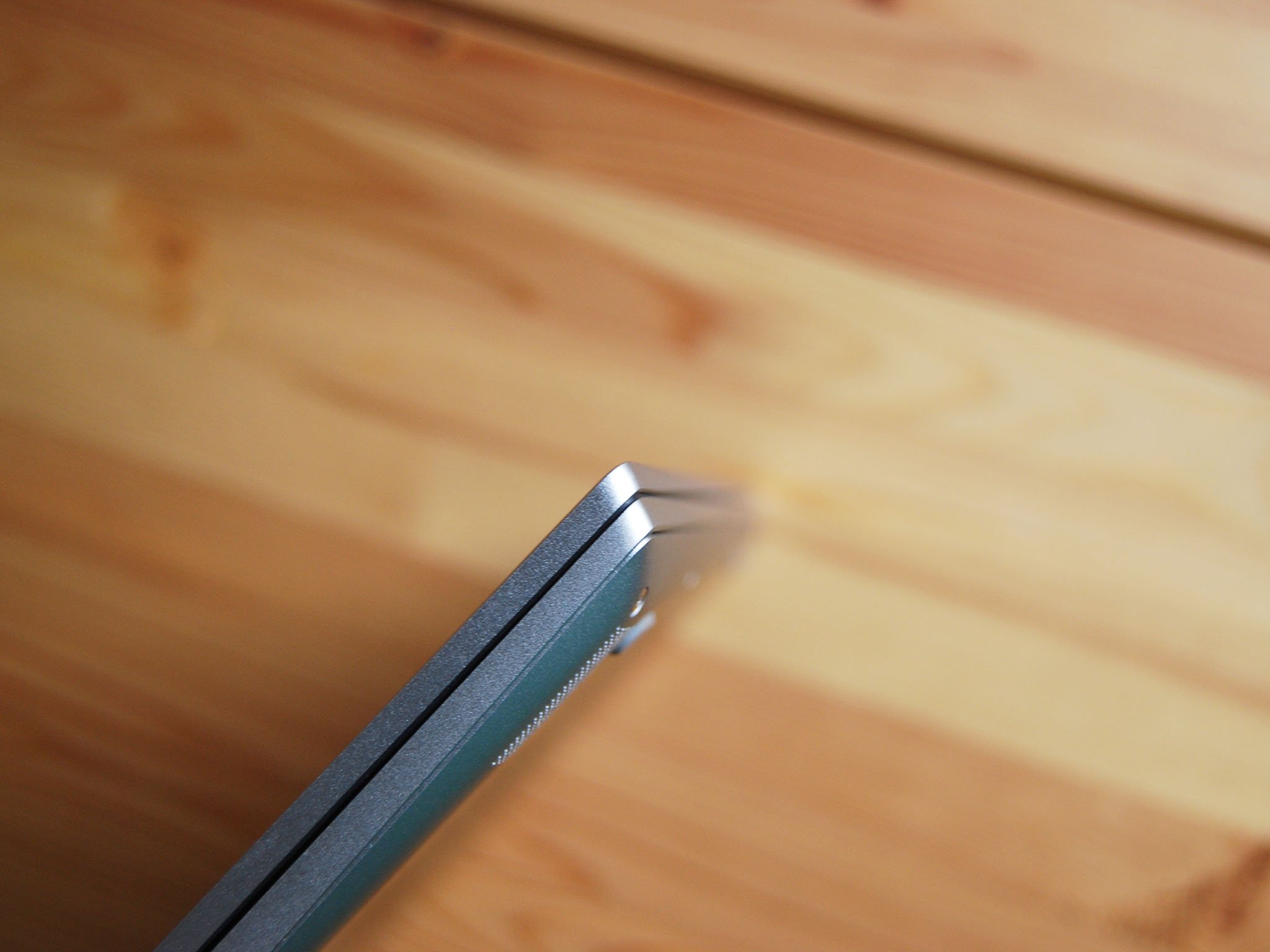

The Yoga 730's aluminum chassis isn't much different than what the 720 was using aside from a bit more of an overbite at the front when the lid is closed. The laptop aesthetically looks great ― the silver finish no longer has an accent around the outer edge, though the touchpad still has the defining ring ― and doesn't seem to pick up many visible smudges when in use.
Vents along the back edge have been halved, and though the chassis hasn't gotten any thinner since the 720, it's now a bit lighter, coming in at 2.47 pounds (1.12 kg) compared to 2.9 pounds (1.3 kg). The all-aluminum design means that there's virtually no flex at all to the lid or chassis, and the device does feel solid enough to stand up to some heavy abuse.
The dual-hinge system remains the same, with a tight grab that doesn't let the lid shake about if you're in a moving vehicle. The laptop, as a convertible, can be flipped around into tent, stand, or tablet modes, and in any orientation, the lines all continue to flow together almost seamlessly. The power button is again located on the side of the laptop, something I know more than just I find annoying. It has a tendency to get hit when you're holding the PC in tablet mode, and while you can certainly train yourself to not hit it, a power button set into the keyboard deck would probably make more sense.
All the latest news, reviews, and guides for Windows and Xbox diehards.
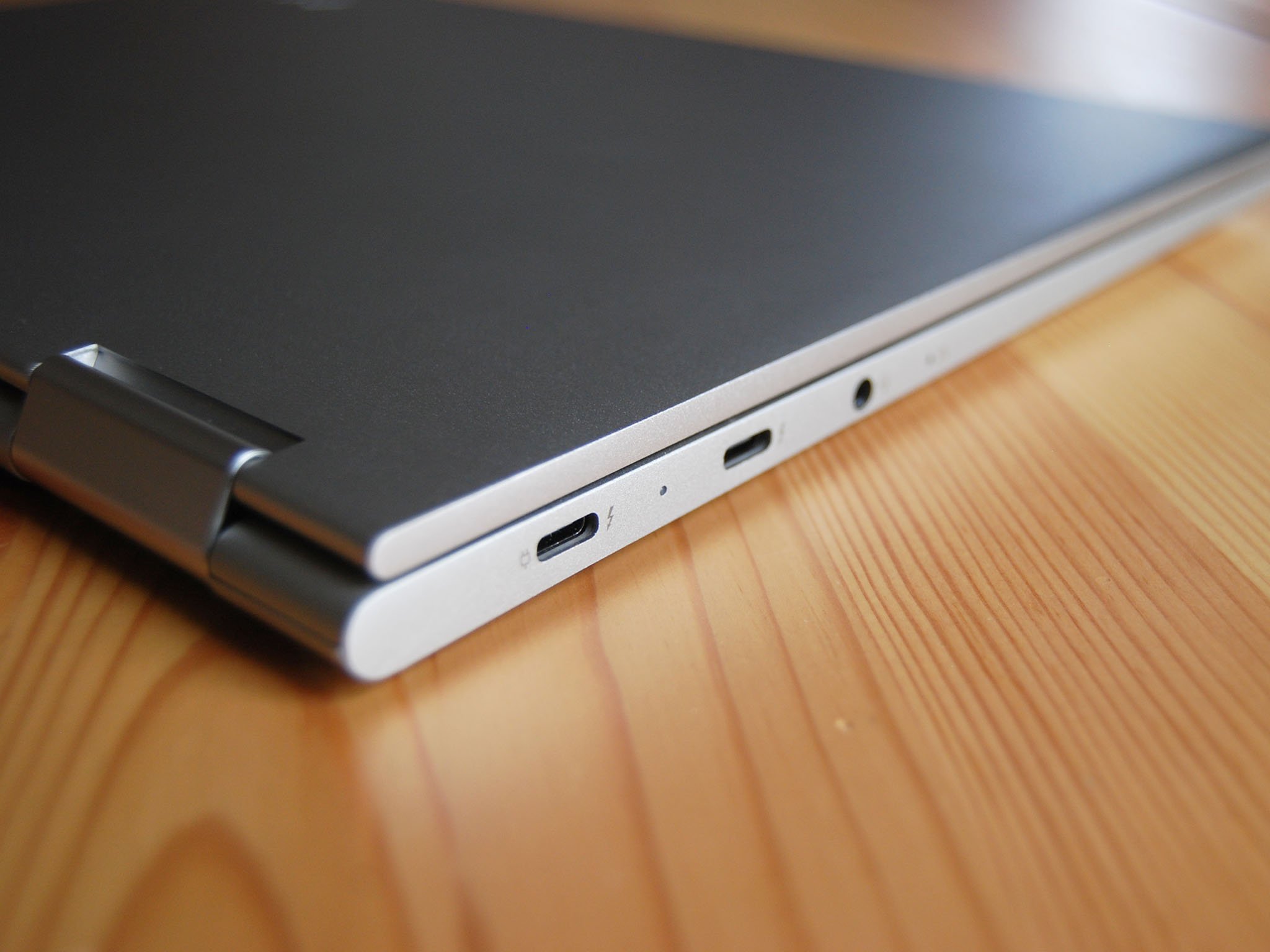
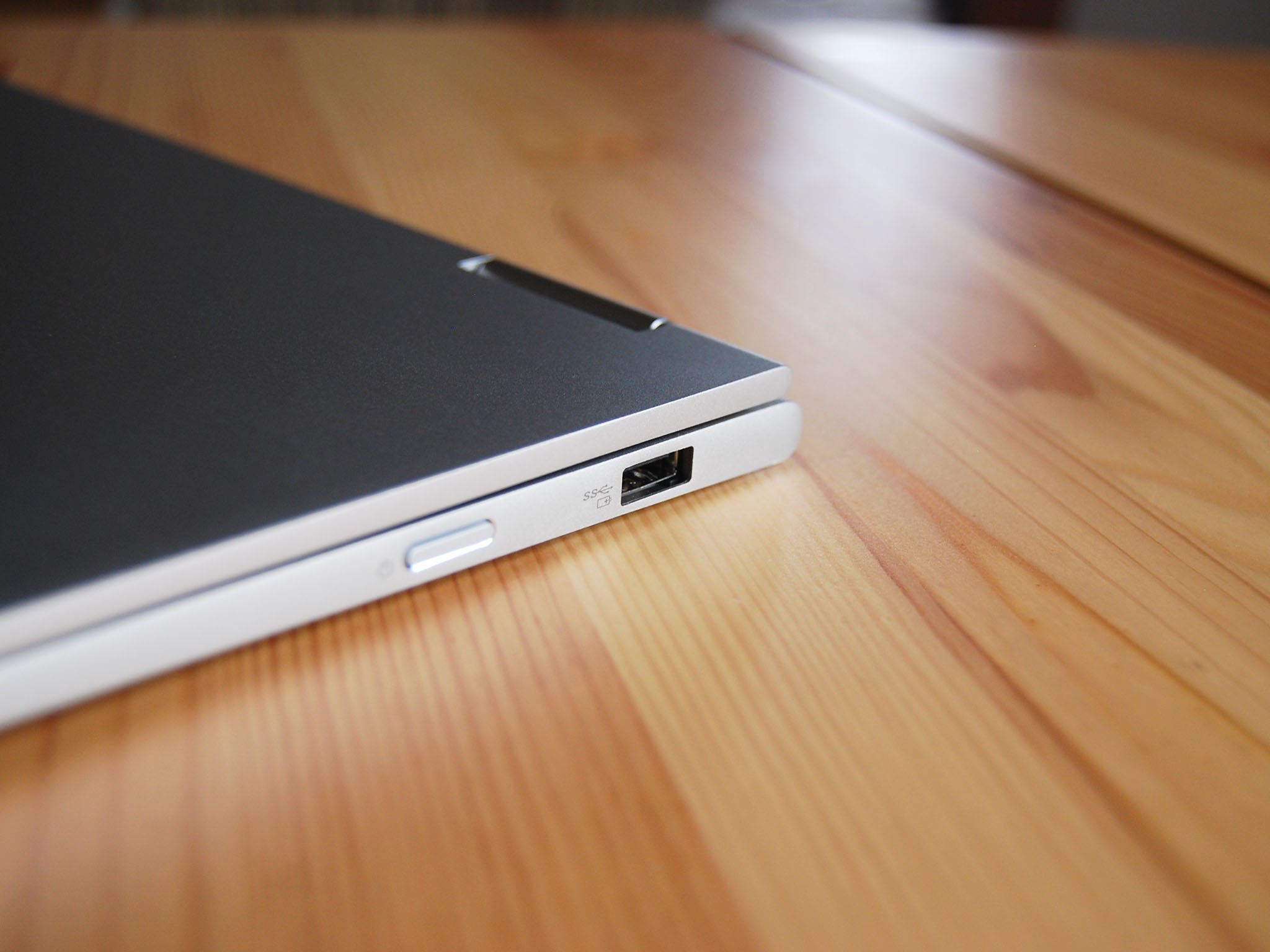
The sides of the laptop are also set with a slightly different selection of ports than the 720 had. Here instead of a single USB-C and single Thunderbolt 3, you're getting two Thunderbolt 3 (4x lanes of PCIe), one of which is used for charging. Rounding out the selection is a single USB-A 3.0 port and a 3.5mm audio jack. For you fans of Windows Hello, a fingerprint reader is set into the right palm rest, far enough out of the way that it won't rub against your palm while typing. As for the webcam, you're looking at a basic 720p without any IR capabilities.
Lenovo Yoga 730 display
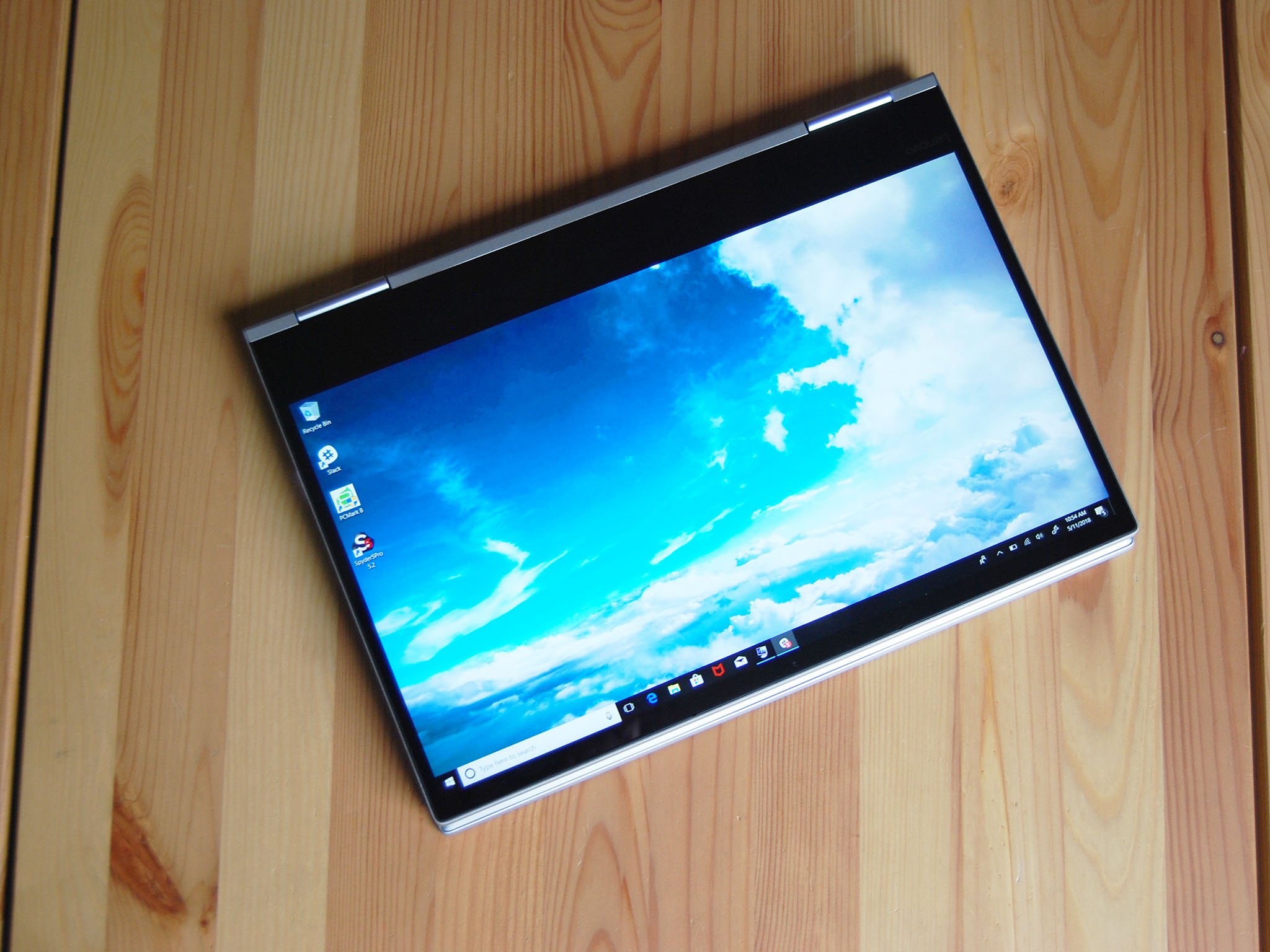
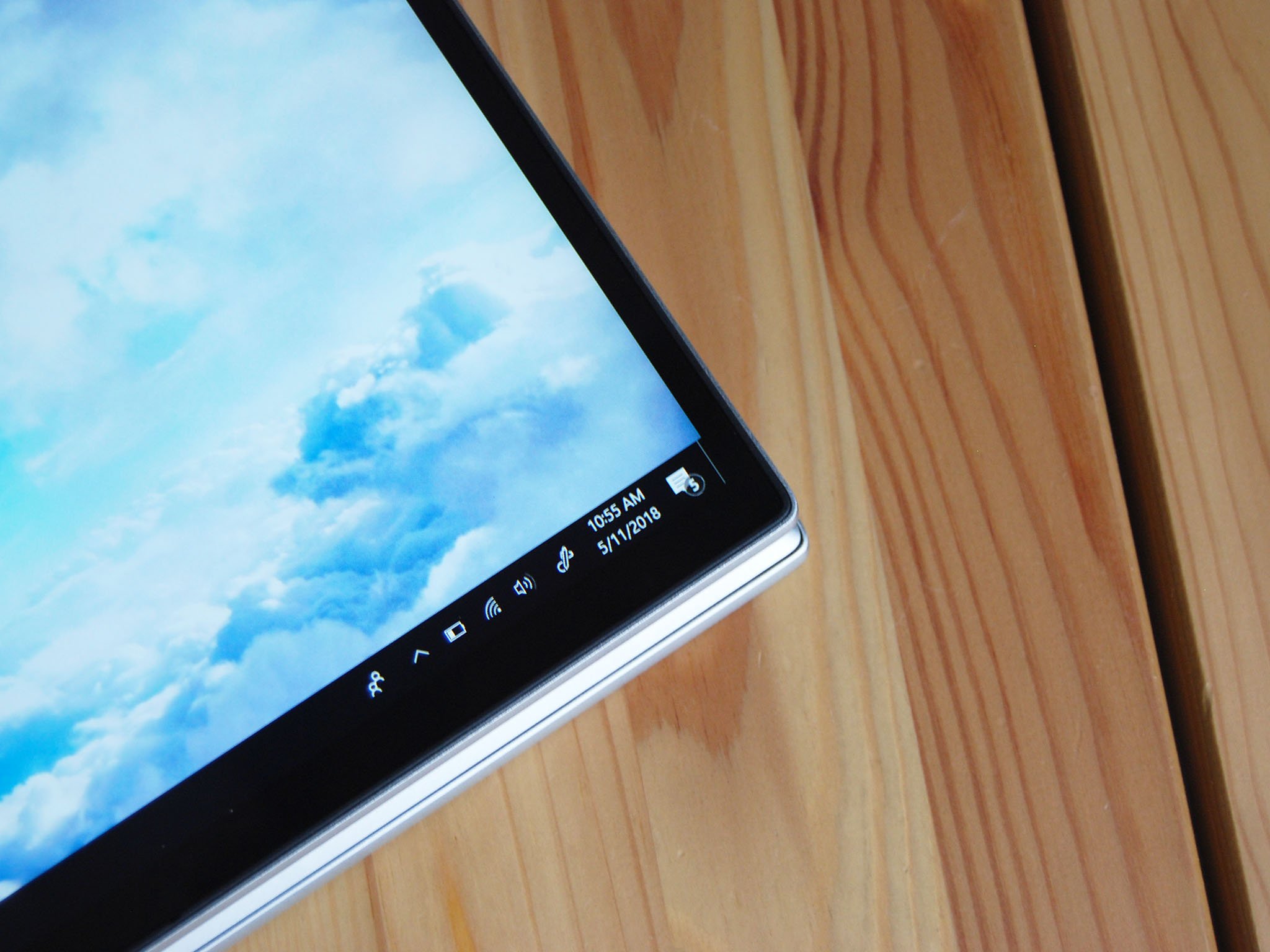
The Yoga 730 seems to have about the same amount of bezel as the 720 had, which really isn't a lot. Sure, there are laptops with less, but here you have a tiny bit of space for your thumbs to grip onto when in tablet mode. There's still quite a large chin below the touch display, a space that possibly could have been occupied by an IR camera setup.
The 13.3-inch display itself has a glossy finish, and while the brightness can apparently hit 300 nits, it's not enough to combat the sun if you occasionally work outdoors. Testing color accuracy, I saw 91 percent sRGB and 71 percent AdobeRGB, both average results that could certainly be better.
The touch function of the display worked without a hitch, and though Lenovo's Active Pen 2 is an option if you're a creator, it was not included with the review unit. Overall, the display is just lukewarm compared to what a lot of other manufacturers are offering, but that's a reality of keeping a laptop less than $1,000. It looks, for the most part, fantastic (at least until you're fighting a bright day) and it gets the job done. Plus there's a wide viewing angle, great for tent-mode movie nights.
Lenovo Yoga 730 keyboard and touchpad
I don't still have the Yoga 720 here to test, but I don't think the keys had so little travel space as they do on the 730. It's not an awful typing experience ― the keys do make a satisfying thump when they bottom out ― but if you're someone who types all day, you should definitely test this keyboard in person before making a final decision.
Keys are well-spaced thanks to Lenovo using most of the width of its chassis, and you have your usual collection of volume, backlight (which has three levels), and screen brightness functions associated with the top row of F keys. The keys themselves are set down into the chassis just enough to avoid them ― and the oil from your fingers ― mashing up against the display when it's closed.
I love a big touchpad, and the Precision option Lenovo includes here is satisfying. It clicks well, it taps well, and it tracks all gestures well. What more could you ask for? The polished rim sets it off nicely from the rest of the chassis, and it's big without looking disproportionately sized.
Lenovo Yoga 730 performance
Though the Yoga 730 is available with up to an 8th Gen Core i7-8550U CPU, I have here the Core i5 model that I think applies to a lot more people. After using the laptop for about two weeks, there aren't any standout performance issues I noticed. It operates smoothly and quickly for what I need ― word processing, heavy web browsing, video watching ― though, the relatively small 48Wh battery is noticeable.
You can expect to get about seven hours of life from a charge if you're not pushing it, which really isn't enough to be able to leave your charger behind when heading to work. A lot of laptops this year are pushing double digits from a charge, so this is something to keep in mind. To combat the lousy battery life, Lenovo has introduced Rapid Charge. It can supposedly take a dead battery to about two hours of life from a 15-minute charge, which is very handy if you don't mind toting around your charger. I'd prefer better overall battery life, but at least Rapid Charge is there if you need it.
The Yoga 730 stays relatively cool while under load, though when the fan kicks on you will notice it. Nothing blatant, but there are certainly quieter laptops. The dual JBL speakers can easily drown out the sound with decent quality even in the upper volume reaches.
CPU
Geekbench 4.0 benchmarks (higher is better)
| Device | CPU | Single core | Multi core |
|---|---|---|---|
| Lenovo Yoga 730 13 | i5-8250U | 4,178 | 13,354 |
| Lenovo ThinkPad X280 | i5-8250U | 4,061 | 13,017 |
| LG gram 15 | i7-8550U | 5,033 | 12,906 |
| Samsung Notebook 9 Pro 15 | i7-7500U | 4,431 | 8,669 |
| Lenovo Yoga 720 15 | i7-7700HQ | 3,784 | 10,255 |
| HP Spectre x360 15 | i7-7500U | 4,098 | 8,022 |
| Dell XPS 13 (9360) | i7-8550U | 4,690 | 14,334 |
| Dell XPS 13 (9360) | i7-6560U | 4,120 | 7,829 |
| Surface Book 2 13 | i7-8650U | 4,862 | 14,694 |
| Surface Laptop | i5-7200U | 3,725 | 7,523 |
| HP EliteBook x360 G2 | i7-7600U | 4,496 | 8,435 |
| Samsung Notebook 9 15 Ext | i7-7500U | 4,316 | 8,320 |
| Lenovo X1 Carbon | i5-7300U | 4,139 | 8,311 |
| HP Spectre 13 | i7-7500U | 4,100 | 7,469 |
The 8th Gen Intel Core i5 quad-core CPU within is no doubt what the majority of people need on a daily basis, and it performs up to snuff. It takes on most 7th Gen Intel Core i7 CPUs, and you shouldn't have a problem using it for moderate to heavy multitasking.
GPU
Geekbench 4.0 OpenCL (higher is better)
| Device | Compute score |
|---|---|
| Lenovo Yoga 730 13 | 21,000 |
| Lenovo ThinkPad X280 | 21,142 |
| LG gram 15 | 22,334 |
| Samsung Notebook 9 Pro 15 | 19,769 |
| Lenovo Yoga 720 15 | 13,727 |
| Dell XPS 13 (NEW) | 22,555 |
| Surface Laptop | 19,256 |
| HP Spectre x360 15 | 28,868 |
| Samsung Notebook 9 15 Ext | 23,207 |
| HP EliteBook x360 G2 | 21,512 |
| Lenovo X1 Carbon | 20,932 |
| Dell XPS 13 (OLD) | 19,410 |
| Surface Book HD520 | 18,197 |
| Dell Latitude 7280 | 17,827 |
Integrated Intel graphics just keep getting better, but they're still a mile behind dedicated options. You can enjoy some light gaming in the evening (and even some popular esports titles), but don't expect to set any FPS records.
PCMark
PCMark (Home Conventional 3.0)
| Device | Score |
|---|---|
| Lenovo Yoga 730 13 | 3,121 |
| Lenovo ThinkPad X280 | 3,335 |
| LG gram 15 | 3,395 |
| Samsung Notebook 9 Pro 15 | 3,542 |
| Lenovo Yoga 720 15 | 2,993 |
| Dell XPS 13 i7 | 3,280 |
| Surface Book 2 13 | 3,341 |
| Surface Laptop Core i5 | 2,494 |
| Samsung Notebook 9 15 Ext | 2,998 |
| Lenovo X1 Carbon Core i5 | 2,965 |
| HP EliteBook x360 G2 | 2,916 |
| Dell Latitude 7280 | 2,829 |
| HP Spectre x360 15 | 2,472 |
The PCMark Home Conventional test measures how well the hardware in a laptop works together to accomplish usual tasks. Altogether the Yoga 730 holds up quite well against other modern laptops, and I didn't have any major issues with performance during daily use.
SSD
CrystalDiskMark (higher is better)
| Device | Read | Write |
|---|---|---|
| Lenovo Yoga 730 13 | 2,790.6 MB/s | 506.8 MB/s |
| Lenovo ThinkPad X280 | 3,366.1 MB/s | 1,901.5 MB/s |
| LG gram 15 | 554.1 MB/s | 449.6 MB/s |
| Samsung Notebook 9 Pro 15 | 549.9 MB/s | 519.3 MB/s |
| Dell XPS 13 (NEW) | 1,368 MB/s | 847 MB/s |
| Dell XPS 13 (OLD) | 1,287 MB/s | 794 MB/s |
| Surface Book 2 13 | 1,411 MB/s | 1,202 MB/s |
| Surface Laptop | 423 MB/s | 237 MB/s |
| Lenovo X1 Carbon | 1,518 MB/s | 1,188 MB/s |
| Samsung Notebook 9 Ext | 1,365 MB/s | 1,213 MB/s |
| HP EliteBook x360 G2 | 1,129 MB/s | 916 MB/s |
| HP Spectre x360 15 | 1,128 MB/s | 862 MB/s |
What is advertised as a Samsung SSD on my reviewer's guide is really a Toshiba XG5. Swapping between SSDs based on availability isn't uncommon, but know that it's sort of a luck-of-the-draw type scenario if you were hoping for the Samsung brand. The Toshiba SSD did perform admirably, consistently offering up blazing fast write speeds. Read speeds, however, were far slower; I ran about six or seven tests on different days, and the highest write speed I could come up with was 506.8 MB/s.
Lenovo Yoga 730 review: Conclusion
Lenovo's 13-inch Yoga 730 is not really that much of an update over last year's 720. Battery life is still just meh despite new Rapid Charge function, the display is still on the dim side, and I feel like some of the travel has been removed from the keyboard (my preference might just be changing). New far-field microphones are another new feature here that I didn't really cover, simply due to the fact that I don't think most people are yelling at Cortana from across the room.
However, it is undeniably a well-built, durable convertible laptop that looks great in its aluminum chassis. It performs like a champ (other than the odd SSD write speed) when you need it to, and its port selection looks to the future with Thunderbolt 3 while also holding out for your peripherals still using USB-A. The added benefit of the Lenovo Active Pen 2 should also be taken into consideration, but that's only if you want to shell out an extra $60.
Pros:
- Still a well-built convertible.
- Great performance for the price.
- Dual Thunderbolt 3 ports.
Cons:
- Poor battery life.
- Display could be brighter.
- Keyboard seems to have less travel.

Cale Hunt brings to Windows Central more than nine years of experience writing about laptops, PCs, accessories, games, and beyond. If it runs Windows or in some way complements the hardware, there’s a good chance he knows about it, has written about it, or is already busy testing it.
